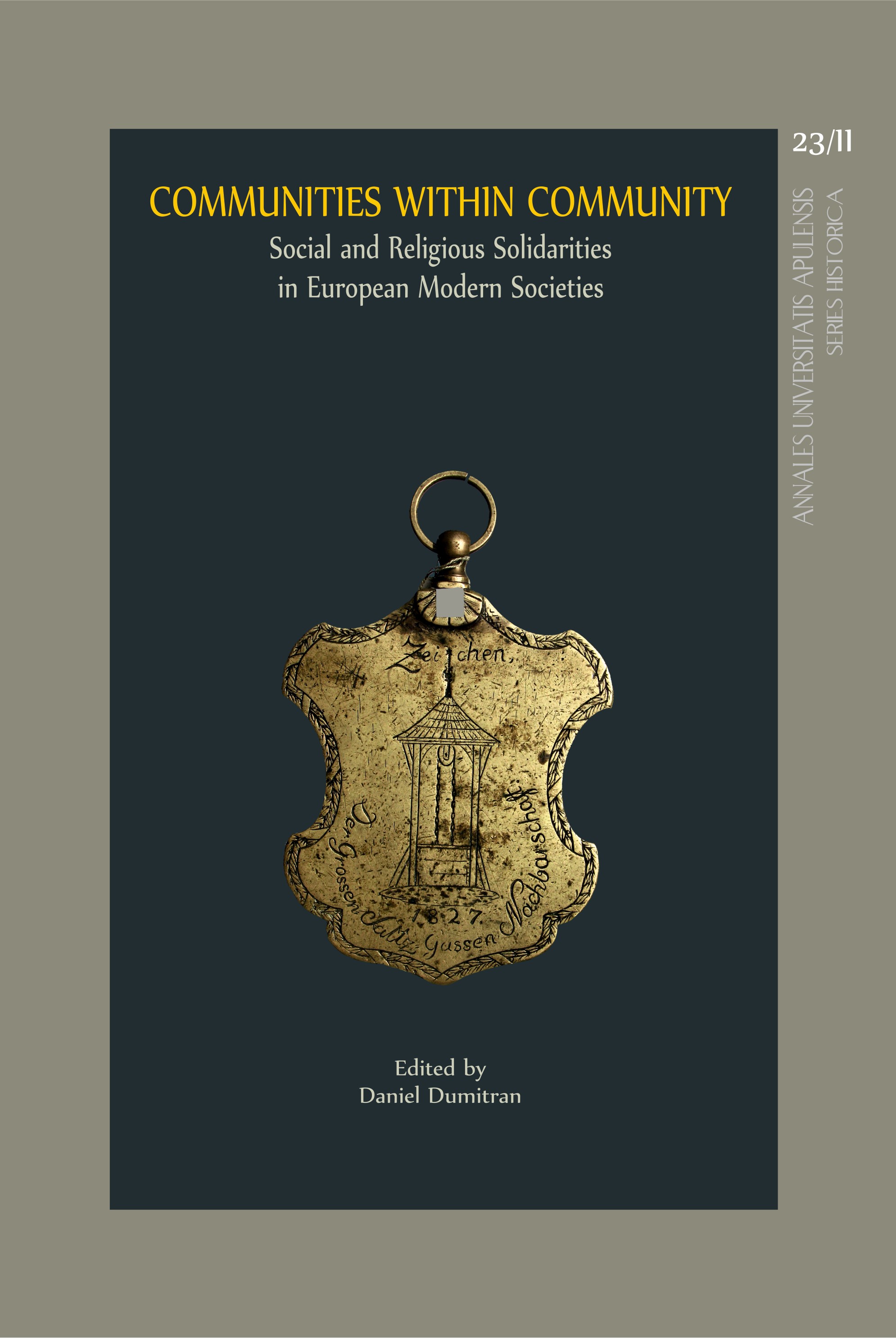Patrimoniul comunităților etnice. Despre vecinătățile sașilor ardeleni
The Heritage of Ethnic Communities. On the Transylvanian Saxons’ Neighbourhoods
Author(s): Volker WollmannSubject(s): Social history
Published by: Editura Mega Print SRL
Keywords: rural Neighbourhoods; material heritage; Gundelsheim Transylvanian Museum; Emil Sigerus Saxon Ethnography Museum; Neighbourhood objects;
Summary/Abstract: The 1993 partnership between the Transylvanian Museum in Gundelsheim and the Ethnographic Museum of Brașov and the 1999 cooperation agreement with the Emil Sigerus Saxon Ethnography Museum had the object of a close collaboration aiming to record, research, conserve, capitalize and preserve of the Transylvanian Saxons’ cultural heritage in Romania. It envisaged the transposition into practice of some common programs and manifestations of museum activity, carrying out field research in the region inhabited by the Transylvanian Saxons, exchanges of information and scientific results, mediation of scientific contacts between the representatives of these institutions, publication of the obtained results, long-term loan facilitation between partners, support of cultural exchanges. The field research was to be undertaken especially in the depopulated areas following the massive emigration of the population from the Saxon villages and the demographic transformations subsequent to the political events since the end of 1989. The initiated investigations had to provide historical data on the respective rural locality, the traditional architecture, the field work, the peasant crafts, the peasant interior (furniture), the costume, the community life over the year (customs) and the social life forms of organization that were the basis of the rural community.Thus, the team of researchers of the Enographic Museum in Brașov, led by Ligia Fulga, has developed a complex program for the on-site documentation of the material culture goods in the rural area and for the different aspects of the village life. The field research was extended in 1990-1992 to 24 villages, especially in the northern part of the county, in the Rupea ethnographic area, then expanded after 1993 in a series of Saxon villages on Târnave Valley, so that after 1998, the team of researchers of the Ethnographic Museum in Brașov could undertake complex researches in the great communes colonized by Saxons from Ţara Bârsei region. Starting this year, the Transylvanian Museum in Gundelsheim has also undertaken field research in collaboration with the Emil Sigerus Saxon Ethnography Museum in several Saxon villages from the areas surrounding Sibiu, in addition taking into account the public constructions and arrangements (cemeteries, mills, wells, bridges, sewerage system, fire stations, etc.), the architecture of the houses, the decoration of the facades or the inventory of the Evangelical churches and the Neighbourhoods.The present text, which is part of the 2018 conference held by the author at the 1 December 1918 University in Alba Iulia, illustrates the results of these researches regarding the material heritage of the Saxon rural Neighbourhoods in Transylvania.
Journal: Annales Universitatis Apulensis Series Historica
- Issue Year: 23/2019
- Issue No: 2
- Page Range: 95-119
- Page Count: 25
- Language: Romanian
- Content File-PDF

